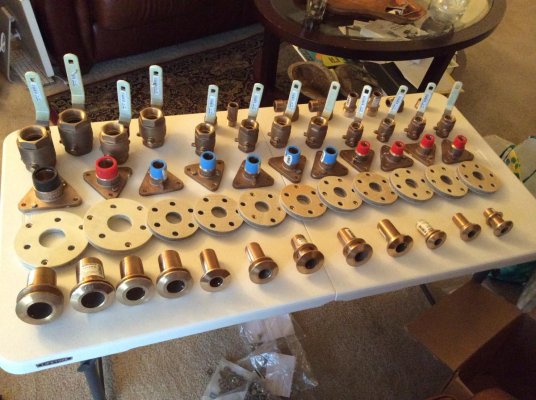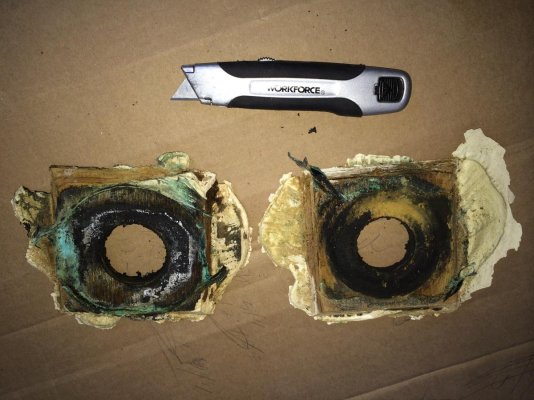- Joined
- Nov 8, 2012
- Messages
- 2,325
- Location
- Port Orchard, WA
- Vessel Name
- Sandpiper
- Vessel Make
- Bluewater 40 Pilothouse Trawler
In the past, wood was used for seacock backing plates. The purpose for the backing plate was to distribute the load and add thickness.
A secondary function of a wood backing plate was to stop leaks. The theory was that in the event of a leak, water would swell the wood backing plate and stop the leak.
I've witnessed leaking seacocks stop leaking after an hour or so after splashing because of the wood blocks swelling.
Modern sealants and caulk probably mitigate the seacock leak but I still use wood backing blocks. I have installed the Groco plates on client's boat when requested without issue.
A secondary function of a wood backing plate was to stop leaks. The theory was that in the event of a leak, water would swell the wood backing plate and stop the leak.
I've witnessed leaking seacocks stop leaking after an hour or so after splashing because of the wood blocks swelling.
Modern sealants and caulk probably mitigate the seacock leak but I still use wood backing blocks. I have installed the Groco plates on client's boat when requested without issue.


